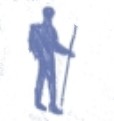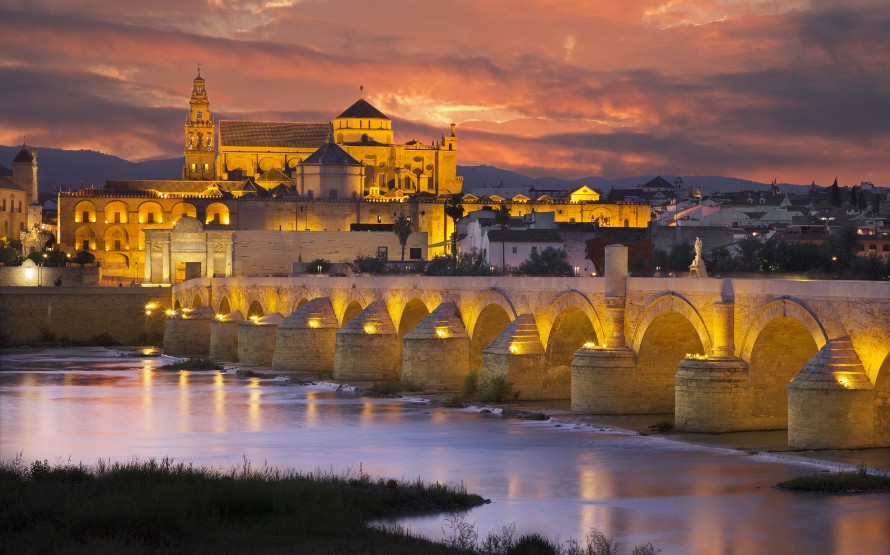Published in Perspective
July 2023
When I arrived in Córdoba, my landlady asked “por que?” What she meant was “por que ahora?”, “why now?” Already I could see her point – or rather, I could have seen her point if sweat was not running into my eyes, and my brain was functioning. It was, to put it mildly, hot. My walk from the bus station to the centre had been like wading through an oven. One of the first things I had seen was a man – a local man – being attended to by paramedics, having collapsed from heatstroke. Not only is Córdoba known as the hottest city in Spain – averaging 36.5 degrees Celsius in the summer – but I had timed my stay with an unprecedented heatwave.
That was several years ago, and of course “unprecedented” has rather lost its meaning now; it was, incredibly, hotter than that in the UK last summer. But Córdoba’s geography – far from the sea, in a dusty bowl in a depression between high mountains – only exacerbates the heat and the feeling of entrapment. Its architecture doesn’t help, as the city is a labyrinth of surreally similar-looking streets that twist and turn haphazardly, their buildings all identically painted in white and dusty yellow. Not good with directions at the best of times, attempting to find my accommodation I had got extremely lost. When I finally arrived, I looked like I’d crawled out of a desert.
Perhaps this was appropriate, for much of southern Spain resembles one, and Córdoba was once the terminus of many caravans. Goods would have come on camelback from across al-Andalus – the Arabic name for the Muslim-ruled parts of the Iberian Peninsula – when this was not Córdoba but the Caliphate of Qurṭubah. Already in those winding streets I had glimpsed the Moorish city, which by the tenth century had grown to be the second biggest in Europe. As well as its size, it was known for its philosophy, art and science, during the period sometimes called the Islamic Golden Age. The novel I had come here to write had its origins in this time. This was the answer to my landlady’s “por que?”
My accommodation was in a guesthouse that resembled a Moroccan riad, arranged around a central courtyard with tiled walls and a fountain. But I was dismayed to discover my room had no exterior windows, meaning no natural light, and was unendurably stifling without the air conditioning on. Planning this visit, I had imagined writing on a shaded balcony, drinking wine and overlooking the bustling city life below. Instead I found myself at a desk under a glaring LED light, with recycled air so cold that I was soon shivering. On reflection, I should have asked if there was a different room, or found somewhere else to stay – but it was too hot to think. Also, I am English.
After a couple of hours of this I remembered the roof garden. My landlady had said I was welcome to sit up there, but it might be… hot. On the roof I found a plastic chair and sat under a parasol. I opened my laptop and looked at the screen. The next thing I knew, ten minutes had passed and my brain had melted. I wrote a few words and deleted them. I closed my laptop and opened it again. My landlady took pity on me and brought up some iced lemonade. Within minutes the drink was warm. I abandoned all pretence of work and gave in to the heat.
The fortnight I spent in that city felt like a strange dream. I would get up early and walk until it got too hot – about 9am – which usually involved getting lost. Then I would seek shelter and hide from the tyrannical sunlight. My room was too depressing and the courtyard was the family’s space, so I went to the public library – a wood-panelled reading room where the temperature was bearable – or to anywhere that had shade, although the shade was scalding too. After noon the streets were deserted and the cafe-bars were closed. Nothing moved, not even the air; another thing Córdoba is known for is its lack of wind. A limp, exhausted silence squashed and stifled everything and it seemed as though everyone had died – which made the miracle of the evening only more surprising.
Gradually the air would soften and the sky turn pink, then green. Swallows would cut through the sky and dance above the plazas. In ones and twos, then all at once, the day’s survivors would emerge and suddenly the streets were full with promenading families, couples, buskers, dogs and motorbikes, giving off a clamour like the buzzing of cicadas. Till midnight I would walk the streets, dipping in and out of bars, smoking cigarettes that I did not want but which gave me an excuse to loiter, watching city life go by. The pavements radiated warmth from dusk to dawn, like hotplates.
I glimpsed Moorish Qurṭubah like fragments of a broken tile, piecing it together through dazed hours of wandering. It was in the layout of the streets, which were like the alleyways of a souk, and in the Guadalquivir, the slow green river that runs the length of Andalusia. The name derives from the Arabic al-Wādī I-Kabīr (simply meaning “Big River”), and it was once navigable from here to Cádiz (Qādis). The deep legacy of the Moors was in the river’s Roman Bridge – the version that stands today was built by Arabs, despite its name – and in the Calahorra Tower with its Moorish crenellations. It was in the Spanish language itself, with its many Arabic inflections, and in my favourite word ojala – which is often translated as “I hope” but means something more like “would that it were”. This derives from the Arabic inshallah, “God willing”, and it invoked a fatalism that I was happy to indulge. In heat like that you cannot plan, but be guided by greater forces.
A guest in the neighbouring room to mine, a schoolteacher from Madrid who I gathered had lived there for some time, took it upon herself to accompany me sometimes. I think she felt sorry for me, always walking around alone. From her I learned that Córdoba’s castle, the Alcázar de los Reyes Cristianos, was not only where the Catholic Monarchs imprisoned the last Moorish king of Granada, but where an ambitious Italian captain by the name of Cristoforo Colombo first presented his crazy plans to sail west across the Atlantic. I became obsessed with a date, the year 1492: not only when, as the poem goes, “Columbus sailed the ocean blue”, but the year the Emirate of Granada finally surrendered. The Christian reconquest was complete, ending eight centuries of Muslim rule. Qurṭubah became Córdoba, but its Moorish ghosts remained.
The schoolteacher also told me that the olive groves around the city, which I had naively assumed were ancient, were relatively new, since for hundreds of years after Christianisation, olive oil was tainted by its association with Muslims and Jews; honest Catholics cooked with pig fat. Neither did honest Catholics bathe, and the city’s glorious hammams fell into disrepair. But nowhere was the collision of cultures more evident than the Mezquita.
The Mezquita – or rather the anachronistic Mezquita-Catedral, Mosque-Cathedral – is Córdoba’s crowning wonder. Inside the fortress of its walls a vast vaulted ceiling is raised on a forest of over 850 columns, richly inlaid with marble, jasper, porphyry and onyx. Between Islamic arches gleam shrines to bloodied Christian saints, an extraordinary example of religions overlapping. In recent years Muslim organisations have campaigned for the right to worship there, but this has so far been denied. In 2010, two men were arrested after a group of Muslim tourists knelt inside the building to pray, in an incident in which security guards were badly injured. Such violence is especially sad in a place so redolent of al-Andalus, which – at least by the standards of the time – was famous for its culture of religious tolerance.In the abominable heat, I sat by the Guadalquivir and watched white egrets skim the trees, a calm oasis in a city whose legacy blends conflict with coexistence. I hoped that the latter might win out… and for an evening breeze. Ojala.


